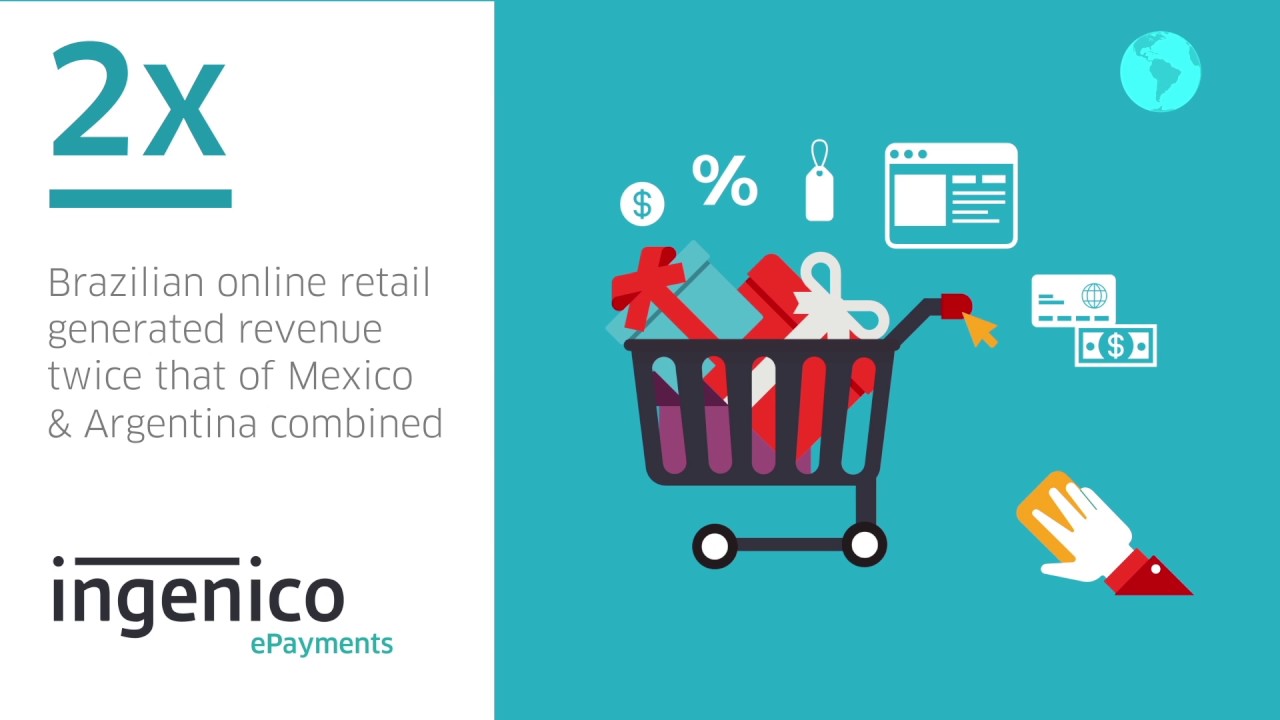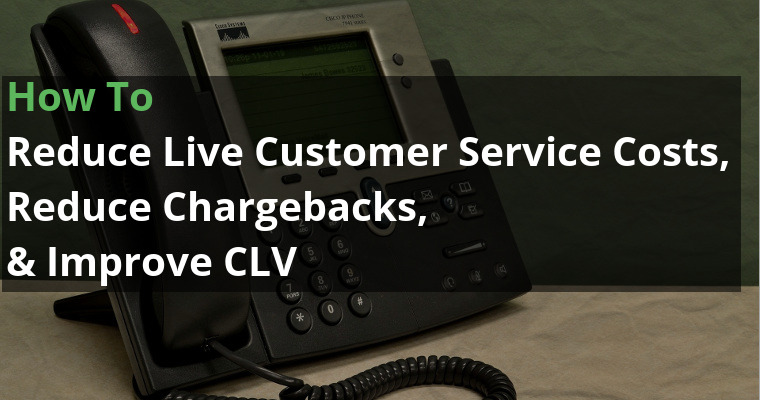 We’ve got a roundup of the latest chargeback news and chargeback management challenges ahead. ACI Worldwide research shows holiday shopping fraud attempts increased by 31%, while the number of overall transactions increased by 16%. ACI also said fraud attempt rates for 2016 holiday shopping season grew to 1 in 97 transactions from 1 in 109 transactions a year earlier.
We’ve got a roundup of the latest chargeback news and chargeback management challenges ahead. ACI Worldwide research shows holiday shopping fraud attempts increased by 31%, while the number of overall transactions increased by 16%. ACI also said fraud attempt rates for 2016 holiday shopping season grew to 1 in 97 transactions from 1 in 109 transactions a year earlier.
PayBefore reports some retailers with a 122% increase in card not present fraud in 2016. BI Intelligence estimates US retailers lost more than $8.6 billion in revenue in 2016 due to “false declines.” TSYS Group predicts card not present losses will reach $6.4 billion by 2018. Southern Rail season ticket holders could get thousands of dollars back after one commuter received $2962 in a chargeback claim due to a strike.
When launched, the tiny new ParceLive GPS tracker could save e-tailers millions of dollars from damage and chargebacks. Due.com shared four tips to help retailers managed chargebacks better. Recurly Fraud Management hopes to reduce the 113% increase in e-commerce identity fraud. VapeSociety.com reduced its e-commerce fraud for $700 a month using NoFraud. Research shows after an average of 1 min., 55 sec on hold, 34% of callers do not call back and often file a chargeback claim. Quick response by call centers can reduce the problem.
Global Fraud Attempts Increased by 31% During Holiday Shopping Season
 Fraud and general retail growth each increased substantially during the 2016 holiday season, according to new benchmark data from ACI Worldwide. Fraud attempts increased by 31%, while the number of overall transactions increased by 16%.
Fraud and general retail growth each increased substantially during the 2016 holiday season, according to new benchmark data from ACI Worldwide. Fraud attempts increased by 31%, while the number of overall transactions increased by 16%.
The survey data*, based on hundreds of millions of transactions from global merchants during the 2015 and 2016 holiday shopping season (starting on Thanksgiving and ending on December 31) highlights key shopping—and fraud activity—trends. ACI ReD Shield, a premier CNP fraud detection and prevention solution for e-commerce merchants, processed 7 percent of Black Friday’s online spend and 13 percent of Cyber Monday’s total online spend. Via aciworldwide.com
For Online Retailers, Holiday Sales Were Up, But So Was Attempted Fraud, Report Shows
 All told, the fraud-attempt rate for the 2016 holiday season increased to 1 in 97 transactions from 1 in 109 transactions for the same period the year before. However, the average ticket for an attempted fraudulent transaction dropped 6% to $228 from $243 in 2015.
All told, the fraud-attempt rate for the 2016 holiday season increased to 1 in 97 transactions from 1 in 109 transactions for the same period the year before. However, the average ticket for an attempted fraudulent transaction dropped 6% to $228 from $243 in 2015.
“Over the 2016 holiday shopping season, merchants experienced significant growth in their digital channels, coupled with a substantial increase in fraud,” said Markus Rinderer, senior vice president for platform solutions at ACI, in a statement. “Given the consistent and alarming uptick in fraudulent activity on key dates, merchants must be proactive in their efforts to identify weak points—and define short and long-term strategies for improved security and enhanced customer experience.”
Because of the holiday-shopping binge, merchants last week confronted the day on which they are likely to receive the most chargebacks they will see on any single day this year, according to data from Chargebacks 911, a Clearwater, Fla.-based company that helps merchants manage chargebacks and chargeback fraud. Via digitaltransactions.net
Viewpoint: 3 Holiday Trends that Will Shape Your Fraud Strategy in 2017
 E-commerce sales continue strong growth. After a slight lull in 2012-2014, projections show 2016 e-commerce holiday sales will grow 17.2 percent, building on the strong 16 percent increase of the 2015 holidays. In all, 2016 holiday e-commerce sales will total nearly $95 billion.
E-commerce sales continue strong growth. After a slight lull in 2012-2014, projections show 2016 e-commerce holiday sales will grow 17.2 percent, building on the strong 16 percent increase of the 2015 holidays. In all, 2016 holiday e-commerce sales will total nearly $95 billion.
Fraud and chargebacks continue to break records. A reported 12 percent increase in online fraudulent activity is projected for the 2016 holidays. However, some merchants are reporting never-before-seen-rates of card-not-present (CNP) and m-commerce fraud attacks, with increases as high as 122 percent!
High-level fraud prevention at the platform level is not yet the standard among the tens of thousands of online payment processors, payment gateways, hosted payment pages and e-commerce platforms worldwide. However, leading companies like 3d Cart, BlueSnap, Braintree, Chase will, Demandware, GoECart, Lime Light, Magento, maxiPago!, Mozu, Oracle ATG Web Commerce and X-Cart.Like are seeing strong returns after implementing this strategy. Via paybefore.com
Riding the US Fraud Escalator in 2017 – Up
 $8.6 Billion. Yes, that is billions with a B, and a capital B, as it represents the staggering amount that merchants lost last year, in the United States alone, from false declines, as estimated by BI Intelligence. This is the amount that went by the wayside from legit customers because merchants thought they looked shady, as Webster noted.
$8.6 Billion. Yes, that is billions with a B, and a capital B, as it represents the staggering amount that merchants lost last year, in the United States alone, from false declines, as estimated by BI Intelligence. This is the amount that went by the wayside from legit customers because merchants thought they looked shady, as Webster noted.
Looking at fraud systems, said Tan, the impetus is to err on the side of “minimizing chargeback and payment fraud,” but traditional systems, he said, “don’t do enough to manage the tradeoff of making sure there is an acceptable and healthy rate of false [declines].” He likened this approach to casting a very wide net, at the expense of letting innocent people accomplish what they want during a transaction. As an analogy, he said, think of an airport security setup, where the clear majority of users are not terrorists, yet the current system demands an unpleasant and inefficient process.
As so much business moves online, he said, with that $8 billion figure (writ much larger internationally), the question becomes how to minimize threats while maximizing revenues without forcing the tradeoff of security and convenience for the customer. The ability to provide convenience will become “a huge competitive differentiator” over time, he said, citing Amazon, with its famed quick checkout process, in turn predicated on the ability to manage risk accurately and in real time. Via pymnts.com
TSYS, Ethoca Fight Fraud and Chargebacks
 It’s predicted that U.S. card issuers could very well face card-not-present (CNP) losses totaling nearly $6.4 billion by 2018. Today’s eCommerce- and mobile commerce-enabled landscape, coupled with the recent EMV liability shift, has led cybercriminals to change their focus and efforts to zero in on CNP fraud opportunities.
It’s predicted that U.S. card issuers could very well face card-not-present (CNP) losses totaling nearly $6.4 billion by 2018. Today’s eCommerce- and mobile commerce-enabled landscape, coupled with the recent EMV liability shift, has led cybercriminals to change their focus and efforts to zero in on CNP fraud opportunities.
The protections offered through EMV chip-enabled cards is good news for consumers, but for merchants and issuers, it can be a whole different story. Not only does this open the door to more fraud but also to more chargebacks.
“That card-not-present scenario is open to more fraud, as well as different types of fraud,” explained TSYS Group Executive of Product Strategies Andrew Mathieson, “and, in the chargeback case, a key way of recovering that fraud exposure from an issuing standpoint is chargebacks to the merchants.” Via pymnts.com
Southern rail: could more commuters claim a credit card refund?
 Season ticket holders on strike-hit train lines could be in line for thousands of pounds in compensation after one commuter successfully claimed £2,400 back from his credit card company.
Season ticket holders on strike-hit train lines could be in line for thousands of pounds in compensation after one commuter successfully claimed £2,400 back from his credit card company.
The regular commuter on Southern trains, known only as “Sean”, applied to American Express for a 50% refund claiming non-delivery of the service. But how did he manage it, and does this mean that thousands of other commuters can do the same?
Sean had paid £4,800 for his annual season ticket between Hassocks in West Sussex, and London Bridge, using his American Express Platinum credit card. After it expired he presented evidence to Amex that 50% of his journeys had been disrupted and cancelled, and requested 50% of his money back. He is believed to be the first commuter to use the “section 75” clause of the Consumer Credit Act to make a claim involving regular rail travel. After filing his claim, Amex refunded half his season ticket cost – £2,400. Viatheguardian.com
Real-time parcel tracking technology secures funding; begins second wave of deployment
 Designed for tracking high-value, fragile, and time- or temperature-sensitive packages, ParceLive is a postcard-sized device that is inserted into a parcel at the point of distribution. By monitoring several key factors, the device allows both sender and receiver to monitor the exact location and condition of their package in real-time.
Designed for tracking high-value, fragile, and time- or temperature-sensitive packages, ParceLive is a postcard-sized device that is inserted into a parcel at the point of distribution. By monitoring several key factors, the device allows both sender and receiver to monitor the exact location and condition of their package in real-time.
The first wave of the rollout will involve 500 ParceLive devices tracking real parcels on their journeys across the world. The company is on track to produce 20,000 units for general availability by mid-2017.
ParceLive helps in three key areas:
- Customer service. Access to real-time data keeps the receiving customer informed and happy, and reduces the customer support burden.
- Dispute resolution. Disputes leading to chargebacks can now be resolved with hard data and will lead to reduced insurance premiums.
- Network optimization. Costly bottlenecks or locations at which specific incidents are occurring with shipments can be easily identified and rectified. Via iot.do
What to Do with Credit Card Processing Chargebacks
 Despite your very best efforts to verify cardholders, check signatures, and spot fraud before it happens, you’ve gotten a chargeback–a reversal–of a credit card transaction you processed. What to do now? While you’re likely to be worried and frustrated, keep your emotions under control while you take action. Just because a chargeback has occurred doesn’t necessarily mean that it’s permanent, and in a worst case scenario, closely examining what happened with a cool head gives you a better chance of learning from your mistake. Here are four steps to follow when chargebacks happen to you.
Despite your very best efforts to verify cardholders, check signatures, and spot fraud before it happens, you’ve gotten a chargeback–a reversal–of a credit card transaction you processed. What to do now? While you’re likely to be worried and frustrated, keep your emotions under control while you take action. Just because a chargeback has occurred doesn’t necessarily mean that it’s permanent, and in a worst case scenario, closely examining what happened with a cool head gives you a better chance of learning from your mistake. Here are four steps to follow when chargebacks happen to you.
Deal with Customer Service Issues Immediately
Sometimes, you’ll have the opportunity to stop a chargeback right before it happens. If you get a chargeback notification, you still have time to contact the customer and find out what’s going on before the chargeback actually goes through (along with those exorbitant fees). Maybe your customer received the wrong item or an empty box; maybe they were displeased with a damaged product, or their item wasn’t at all what they’d hoped. Talk to them and find out how you can make it right. You may consider asking an employee with excellent soft skills to be in charge of staying on top of chargeback notifications so that you can transform them into impressed (and satisfied) customers. At the very least, you can offer them a refund–you won’t damage your relationship with your credit card processor, and you won’t get slapped with a chargeback fee. Via due.com
Recurly Fights Subscription Fraud With New Tool
 Recurly, the enterprise-grade subscription management platform, announced Recurly Fraud Management, which provides automated tools to protect revenue by minimizing chargebacks, prevent e-commerce fraud and deter the creation of unauthorized accounts. These threats, if left unchecked, decrease revenue and profits, increase operating costs and impact customer trust.
Recurly, the enterprise-grade subscription management platform, announced Recurly Fraud Management, which provides automated tools to protect revenue by minimizing chargebacks, prevent e-commerce fraud and deter the creation of unauthorized accounts. These threats, if left unchecked, decrease revenue and profits, increase operating costs and impact customer trust.
In a press release, Recurly said credit card fraud in e-commerce channels continues to be a source of concern for subscription businesses. According to the 2016 Identity Fraud Study authored by Javelin Strategy and Research, new account fraud, or the creation of unauthorized accounts, more than doubled, increasing by 113 percent and representing 20 percent of all fraud losses. Unauthorized accounts not only lead to lost revenue and costly chargebacks but can also negatively impact processing relationships with card issuers, gateways and merchant banks.
Unlike competitive subscription management offerings, Recurly’s integrated fraud management capabilities reduce the complexity of combating fraud with “set-and-forget” configuration options and customized rules. Powered by Kount, the fraud prevention platform, Recurly Fraud Management improves fraud screening and eliminates the cost of manual reviews, lowering fraud losses and minimizing chargebacks. In addition, device fingerprinting, which identifies a transaction’s originating device in real time, dramatically improves businesses’ ability to catch and stop fraud. Via pymnts.com
The Problem with Payments for Online Retailers
 There’s a great deal of integration between payment solutions and payment providers online but numerous challenges remain. Let’s take a look at some of the most serious threats and what Internet retailers can do about it.
There’s a great deal of integration between payment solutions and payment providers online but numerous challenges remain. Let’s take a look at some of the most serious threats and what Internet retailers can do about it.
FRAUD: It’s essential that online merchants are focused on the effectiveness of their security measures. Fraud has always been a problem and likely always will be. The only thing that can change is how Internet-based retailers can prevent it from happening. Start with an audit of your online payment system (ideally an expert that knows what to look for) and gain an idea of the existing vulnerabilities.
CHARGEBACKS: Investing in solutions that help online merchants identify patterns in user behavior to show when transactions show signs of abnormal purchase activity can make a world of difference to revenue. Preventing chargebacks requires that Internet retailers take a proactive monitoring and mitigation approach. Fortunately, there are an abundance of solutions (including Chargebacks 911, Verifi, SiftScience, Signifyd, Riskified and others) available to guide merchants to fewer chargebacks which can lead to lower processor fees. Via websitemagazine.com
A vaping e-retailer snuffswill out chargebacks
 Cesar Campos thought chargebacks for fraudulent credit card purchases of $3,000-$5,000 per month were going to be a regular cost of doing business.
Cesar Campos thought chargebacks for fraudulent credit card purchases of $3,000-$5,000 per month were going to be a regular cost of doing business.
Campos, marketing director of Campos Inc. Investments, which operates VapeSociety.com, the affiliated VapeMood.com, and other e-commerce operations, says the 5-year-old business had two employees dedicated to tracking the IP addresses of fraudulent purchasers and verifying suspicious-looking transactions. The result was a slowed-down fulfillment process and not much success in stopping the chargebacks.
Campos says NoFraud eliminated his company’s chargeback problem at a cost of about $700 per month. That, along with increased holiday sales compared with last year, he says, made for a merry holiday season. Via internetretailer.com
4 Ways to Reduce Chargebacks from Long Call Center Hold Times
 Customers don’t like to be on hold – it’s as simple as that.
Customers don’t like to be on hold – it’s as simple as that.
Studies show that after an average of 1 minute and 55 seconds of hold time most callers hang up annoyed – 34% of those callers who hang up will not call back. (Small Business Chronicle)
Guess who these people will call next? The Card Issuer – to do a chargeback. Or they’ll do it online. Most card issuers now offer online credit card dispute options. When it’s easier and faster for a customer to file a chargeback through their bank than to reach your live customer service reps, you have a major business problem. Via business2community.com
Like this chargebacks management roundup?
Get regular chargeback and fraud management updates along with PaymentsNEXT news briefs for free by signing up at the top of the page. Enjoy your weekend and we’ll be back Monday morning with more payments industry news.








LET’S CONNECT